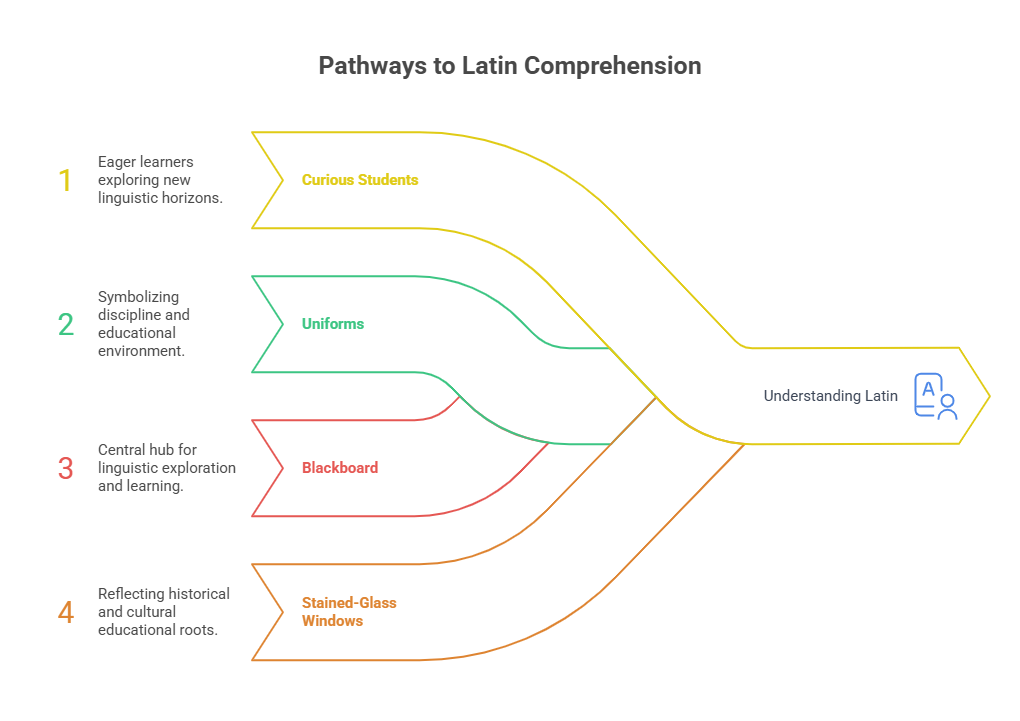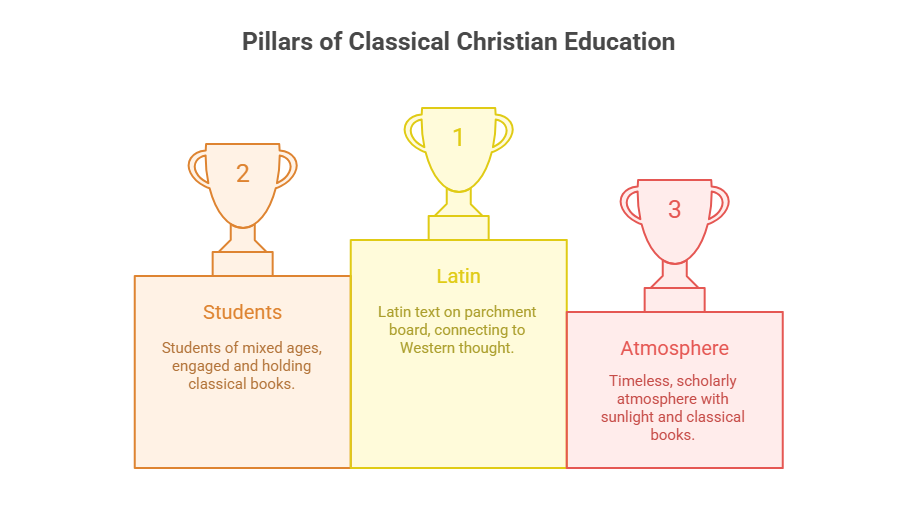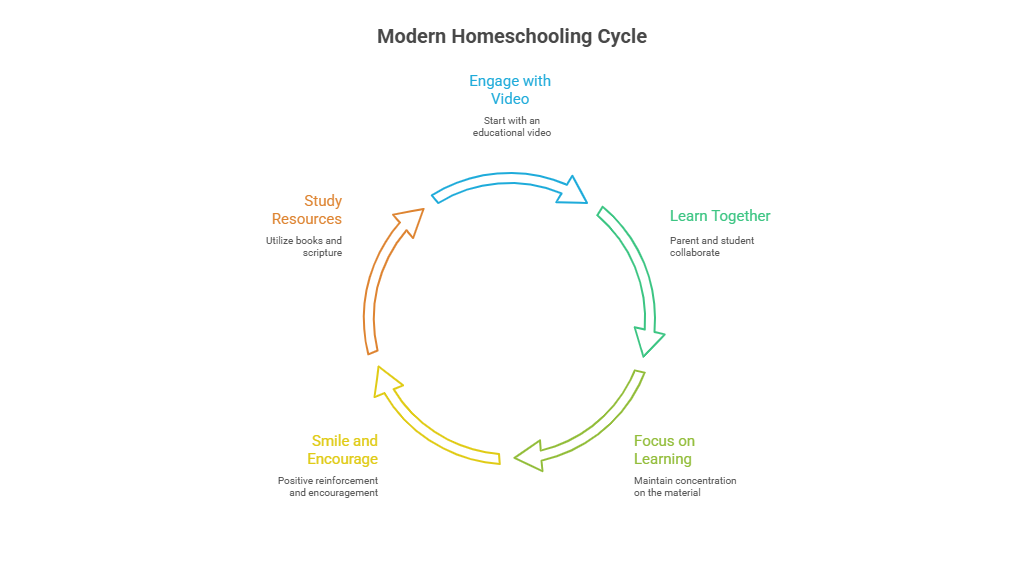How to understand why Latin still matters in Classical Christian Schools is a question many parents and teachers ask. You might be wondering if it’s worth the time, or worried your child won’t connect with a language no one “speaks” anymore.
But here’s the truth: skipping Latin often leaves students with weak reading, limited vocabulary, and little connection to the roots of Christian thought. Many schools drop Latin because it seems too hard or outdated but that choice costs more than it saves.
I’m the founder of LatinPerDiem, and I’ve spent years helping families and schools bring Latin back one short lesson at a time. In this article, you’ll learn why Latin still belongs in the classroom, how it supports faith and learning, and how to start simply. Whether you’re a parent, teacher, or school leader, you’ll walk away with clear reasons and easy first steps.
Key Takeaways
- Latin builds strong reading and writing skills
Students learn grammar, vocabulary, and structure that improve their English, too. - It sharpens thinking and attention to detail
Latin trains the mind to notice patterns, endings, and meaning with care. - Latin connects students to their Christian roots
They read early church texts and Scripture in the original language without filters. - Character is shaped through discipline
Latin teaches patience, humility, and perseverance key values in classical Christian education. - You don’t need to know Latin to begin
LatinPerDiem makes it easy with short video lessons and email guidance. - Misunderstandings about Latin are common—but fixable
With real texts, short lessons, and daily practice, Latin becomes simple and meaningful. - Real families are seeing real results
Even 5 minutes a day helps students grow in language, faith, and confidence.
Facts & Original Research: The Real Impact of Latin in Classical Christian Schools
Latin isn’t just a tradition, it’s a proven tool for stronger minds, and better language skills. Below are real-world numbers, expert perspectives, and success patterns that show why Classical Christian Schools Latin programs still matter today.
Latin Improves Academic Schools
National data consistently shows that students who study Latin score higher across core subjects.
| Subject Area | Average Score (Latin Students) | Compared Group | Source |
| SAT Verbal | 637 | 502 (National Avg) | National Committee for Latin & Greek |
| SAT Math | 616 | 511 (National Avg) | College Board (2019) |
| English GPA | 3.5 | 2.9 (Non-Latin students) | American Classical League |
What Is Classical Christian Schools Latin?
Many people still think Latin is a “dead language.” But in Classical Christian schools, Latin is not dead, it’s a bridge. It connects students to the roots of Western thought, the early Church, and even their own language.
Classical Christian Schools Latin means more than memorizing grammar. It’s about reading real Latin texts, thinking deeply, and building habits of order, patience, and truth. Latin opens the door to the writings of Augustine, Cicero, and the Vulgate Bible, not in translation, but in their original form.
Here at LatinPerDiem, we help make this possible with short, daily video lessons. Each day, thousands of students watch a quick 5-minute clip. They don’t just read about Latin, they read Latin itself. No dry textbooks alone just real Latin lines, real meaning.
Why Learn Latin in Christian Schools
A Stronger Foundation for Reading and Writing
Latin strengthens students’ command of English more effectively than many modern strategies. As they unpack Latin texts, their understanding of vocabulary, grammar, and sentence structure expands naturally. For instance, when we break down Cicero or Augustine, students suddenly see how English words work when the roots, prefixes, and suffixes come alive. Every Latin lesson becomes a vocabulary lesson in English. A single word like benevolentia (“kindness”) teaches students bene (“good”) and velle (“to wish”) a memory that lasts far longer than rote memorization. As Latin builds their mental lexicon, students grow more articulate and more attentive in reading and writing. They’re not just memorizing definitions; they’re seeing how language fits together. Daily exposure to Latin means daily growth in English proficiency, giving students a richer, more precise command of words that empowers them in every subject.
Sharpening Thinking Skills
Latin doesn’t tolerate guesswork. Every word in a sentence has a role subject, object, verb, or modifier and the meaning hinges on precise endings and grammar. This forces students to slow down, analyze, and think logically. A daily 5-minute parsing lesson trains kids to see details others miss. They must ask: What case is this noun? What tense is this verb? What function does this adjective serve? Over time, this practice cultivates a habit of exact thinking. Latin becomes a mental workout that sharpens attention to detail, pattern recognition, and logical sequencing all essential for math, science, and critical reading. It also helps students see structure and order in complex systems. In a world flooded with imprecise messages, Latin forms students who can read with care, write with clarity, and think with rigor. It is language education with intellectual muscle.
Keeping Western & Christian Roots Alive
Latin is more than an academic subject; it is a bridge to the heart of Christian heritage. It connects students directly to the church fathers, the Reformers, and centuries of theological reflection unfiltered by modern translations. When students read Augustine’s Confessions or Tertullian’s defenses of the faith, they aren’t just studying history; they’re hearing voices of Christian witness in their original form. We often reflect on John 1:1 from the Latin Vulgate: “In principio erat Verbum, et Verbum erat apud Deum, et Deus erat Verbum.” The rhythm and power of that line stay with students, reminding them that faith has a language, and Latin helps preserve it. Latin in Christian schools is a way of honoring the past and anchoring students in a rich intellectual and spiritual tradition. It’s cultural continuity with meaning not nostalgia, but nourishment.
How LatinPerDiem Makes It Simple
At LatinPerDiem, we believe Latin doesn’t have to be overwhelming, it just needs to be consistent. That’s why we’ve designed our lessons to be short, focused, and easy to follow. In just 5–10 minutes a day, students (and parents!) can make real progress. Over weeks and months, that daily habit adds up to deep understanding and growing confidence.
Each day, we provide brief video lessons that walk through a single Latin sentence often from Scripture, the church fathers, or classical authors. We explain the grammar, translate it, and reflect on its meaning. Our email subscription brings these lessons right to your inbox, so there’s no need to hunt for content.
And best of all, you don’t have to be a Latin expert to use them. We guide, you learn together. Whether you’re a homeschooling parent, a teacher, or a curious student, LatinPerDiem meets you right where you are. With clear explanations, faithful sources, and consistent practice, we help bring Latin to life one small step at a time.
Common Misunderstandings
We hear the objections all the time and they’re usually based on myth, not experience.
“Latin is too hard.” Not with short, daily lessons. Like anything, Latin gets easier with consistent practice. Five minutes a day can take you farther than you think.
“Few People speaks it.” True but we don’t learn Latin to order coffee. We read it to meet the original authors: Augustine, Cicero, the Reformers, and Scripture itself.
“It’s boring.” Not if you start with real texts and rich context. LatinPerDiem begins with sentences that matter lines full of meaning, history, and beauty.
Latin isn’t about memorizing endless charts or grinding through dry drills. It’s about connecting with the roots of language, thought, and faith. With the right approach, Latin becomes not only manageable but deeply rewarding.
Success Stories From LatinPerDiem
I’m loving the bite-sized ‘per diem’ extracts and learning a lot from them…Thank you for this really excellent resource. I’m an eager learner, having worked through George Sharpley’s Complete Latin Course. Mark W.
In my search for available material, I found LatinPerDiem, and it was like finding a treasure. The videos are short and full of information, not only with correct pronunciation, but also vocabulary, grammar and even context of each author. The range of authors covered, from the classics to the reformers, allows an understanding of how the language develops and how it is used in different contexts. Professor David has a simple and consistent didactic, which really teaches the student how to think the language, and not only translate automatically without reflection. Joel P.
Conclusion
Latin isn’t dead, it’s waiting for you and your students to bring it back to life. Start small. Join us tomorrow for your first daily lesson and see how just a few minutes can make a difference.
Frequently Asked Questions
Is Latin still useful for students today?
Yes, Latin builds core skills in reading, writing, and thinking that transfer directly to English and other subjects. It also connects students to Western and Christian heritage. Even just 5 minutes a day makes a long-term impact.
How can I teach Latin if I don’t know it myself?
You don’t have to be an expert. LatinPerDiem provides short video lessons and email guides so you and your child can learn together. We explain everything clearly “We guide, you learn together.”
What’s the easiest way to start learning Latin at home?
Start small. One short daily video from LatinPerDiem gives you structure, guidance, and real Latin from day one. No textbooks required just 5–10 minutes a day.
Why do Christian schools still teach Latin?
Latin connects students to centuries of Christian thought from the early church to the Reformers. It builds both faith and intellect. Schools use it to form thoughtful, articulate, and grounded students.
Can I use LatinPerDiem from Anywhere?
Yes, LatinPerDiem is 100% online and available worldwide. Whether you’re in the U.S., Europe, Asia, or elsewhere, you can access daily lessons, subscribe by email, and learn at your own pace.




